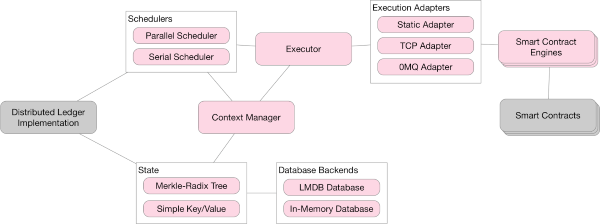The Hyperledger project that operates under the auspices of The Linux Foundation has launched Hyperledger Transact, which promises to make it possible to create smart contracts that can run on multiple blockchain platforms.
This latest Hyperledger initiative promises to create a standard interface for executing smart contracts on multiple distributed ledger implementations. It includes a shared software library that handles the execution of smart contracts, including all aspects of scheduling, transaction dispatch, and state management. Hyperledger Transact also adds smart contract languages, known as “smart contract engines.” That creates a virtual machine or “interpreter” to process smart contracts.
Brian Behlendorf, executive director for the Hyperleder proect with the Linux Foundation, says that while there has been an explosion of innovation involving blockchain technologies, the Linux Foundation is deliberating supporting a total of 14 projects that in some cases overlap with one another in terms of the functionality being provided. Given how early it is in the development of blockchain technologies, the Hyperledger project wants to be in the best position to help rationalize blockchain technologies as they continue to evolve and mature, says Behlendorf.
Those multiple technology platforms not only help spur on innovation, Behlendorf says they also foster competition between providers of different classes of blockchain networks.
“That helps keep network fees low,” says Behlendorf.
In the meantime, Belendorf notes the number of transactions that a blockchain platform can support continues to climb. There are instances in a laboratory environment where 3,500 transactions per second (TPS) has been achieved. No expect blockchain databases to replace relational databases any time soon, but that level of scale suggests there is an opportunity to expand the number of use cases for blockchain platforms, says Behlendorf.
Ultimately, Belendorf expects most of the use cases for an immutable blockchain database will be focused on replacing processes that today require a human signature to complete, especially as digital identities are assigned to end users via multiple blockchain networks.
In the meantime, the number and types of blockchain network services being made available as part of various digital business transformation initiatives is about to explode. The next big issue won’t be so much about the technology as much as it is overcoming the inertia surrounding existing business processes that in some cases have been in place now for decades.



